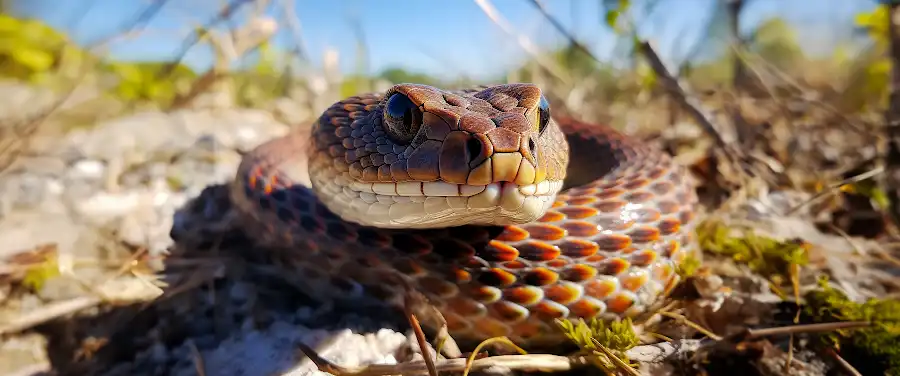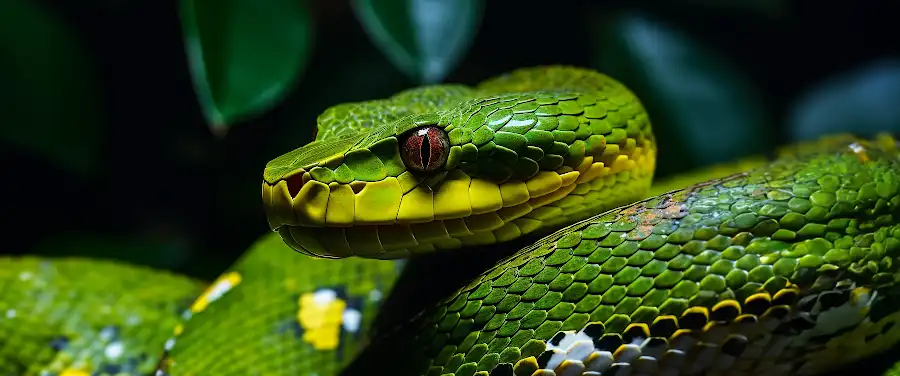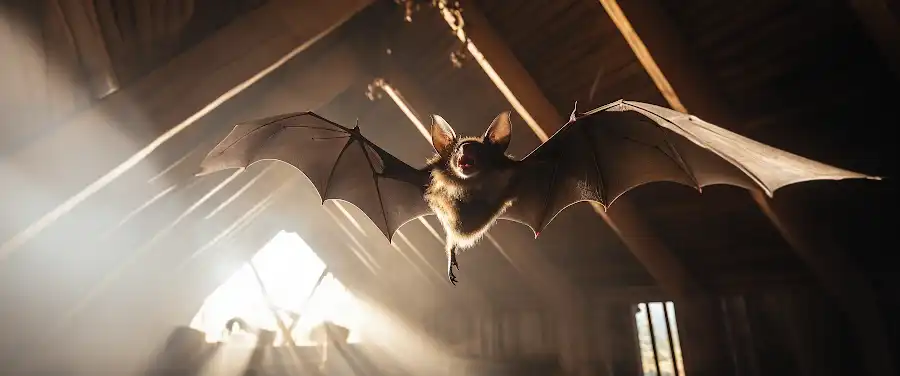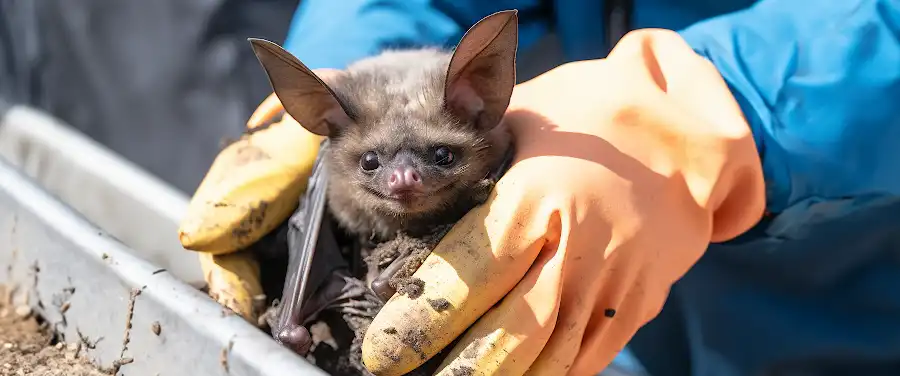
Welcome, fellow wildlife enthusiasts, to one of the most bio-diverse states in the US – the Sunshine State, Florida. Known for its sun-kissed beaches and everglades, Florida is also home to a mind-boggling number of snake species! Yes. You heard that right. Snakes! Now, before you react with a shudder or gasp, let us remember the old saying: “Knowledge is power.” And in this case, it’s your power to identify these slithering neighbors in the fascinating, sometimes surprising, world of Florida’s wildlife.
Recognizing Florida’s snake biodiversity is no small task. The state houses a whopping 50 species, each with its own distinct features and behaviors. So, if you’re a resident or just passing by as an enthusiastic backpacker, it becomes incredibly important to know who’s who in the fauna kingdom around you. Half of the excitement of any wildlife experience comes from understanding and identifying. In this case, it’s the difference between a harmless garden snake and a potentially more dangerous species. By the end of this piece, Importance of snake identification won’t look like a hard nut to crack anymore, rather an interesting conversation piece!
Fasten your seatbelts as we embark on this adventure through the bustling highways, serene backwaters, and dense forests of Florida, discovering its rich and varied snake inhabitants. From the common and harmless to the rare and venomous, we will unravel the mysteries of these misunderstood creatures. For the wildlife enthusiasts out there, and the curious souls looking to understand more about nature’s intricacies, your journey enriched with first-hand understanding of Florida’s wildlife begins here. Remember friends, we’re not just spectators here, but part of the grand tapestry of life that ties us all together. Now, shall we scratch beneath the surface and find out, “What Defines a Snake?” Let’s slither ahead!
How Can You Distinguish Between Venomous and Non-Venomous Snakes?

Snakes are among Florida’s most iconic and intriguing creatures, boasting a wide variety of sizes, colours, and behaviours. Indeed, understanding the defining traits of venomous and non-venomous snakes is a critical skill for any wildlife enthusiast. It’s an essential combination of knowledge, observation and respect for the environment.
Statistically speaking, according to Florida Fish & Wildlife Conservation Commission, there are approximately 50 species of snakes in Florida, and only six are venomous. This knowledge could help us to coexist with these fascinating creatures more safely and harmoniously.
What are the Characterizing Features of Venomous Snakes?
Venomous snakes flaunt unique characteristics that easily separate them from their non-venomous counterparts. Let’s delve into the physical and behavioural traits that define venomous snakes:
- 1Physical Features: Venomous snakes like the Eastern Diamondback Rattlesnake or the Dusky Pigmy Rattlesnake typically have triangular or ‘spade-shaped’ heads, thick bodies, and distinctive colorations and patterns.
- 2Behavioural Traits: Venomous snakes often display defensive behaviours when threatened. For example, the Eastern Coral Snake will curl its tail, mimicking its head to confuse predators.
- 3Patterns and Colours: Venomous snakes are often boldly patterned or brightly coloured, which acts as a warning to potential threats. For instance, the Eastern Coral Snake exhibits bold red, yellow and black bands.
- 4Size: Venomous snake sizes can vary greatly, from the diminutive Dusky Pygmy Rattlesnake to the hefty Eastern Diamondback Rattlesnake which can reach lengths of up to 7.8 feet.
What Distinct Traits do Non-Venomous Snakes Possess?
Venomous snakes flaunt unique characteristics that easily separate them from their non-venomous counterparts. Let’s delve into the physical and behavioural traits that define venomous snakes:
- 1Physical Traits: Non-venomous snakes often have long, thin bodies with oval or ’rounded’ heads. Take for instance the Black Racer, an agile, fast-moving, and highly visible snake.
- 2Behavioural Traits: Non-venomous snakes are typically less aggressive and tend to flee rather than confront when encountered. Some, like the Eastern Rat Snake, are actually quite beneficial for pest control!
- 3Patterns and Colours: Non-venomous Florida snake patterns can be quite variable. However, the majority tend to have subtler coloring than their venomous counterparts. Brown or black with patchy coloration are common amongst species like the Common Garter Snake.
- 4Size: Sizes among non-venomous species can also vary, from the small Ringneck Snake to the impressive Eastern Indigo Snake, which can reach up to 8.5 feet.
In the world of snakes, colours, sizes and patterns can be deceptive, so it’s crucial to know specific characteristics of both venomous and non-venomous snakes. For a more extensive understanding, check out this resource on Florida’s Snake Identification provided by the University of Florida. It’s not just about identifying common snake species; it’s about cultivating a sense of respect and coexistence with nature.
Let’s now transition into our next topic that is bound to fascinate you. Get ready to delve into the diverse realm of “What are the Common Snake Species in Florida?” Trust me, it’s an exploration you wouldn’t want to miss!
What are the Common Snake Species in Florida?

Florida is a paradise for all wildlife enthusiasts, and among its diverse fauna, snakes remain a captivating species. While encountering a snake can be an unnerving experience for some, understanding them is key to fostering respect and preserving their essential role in our ecosystem. In the heart of Florida, you’ll find both non-venomous and venomous snakes – each unique in their behaviour, habitat, and impact on the ecosystem.
Non-venomous snakes like the Corn Snake, Eastern Indigo Snake, and Black Racer often slither unnoticed around Florida. They primarily feed on small rodents, thus controlling pest populations. On the other hand, we have venomous serpents like the Florida Cottonmouth, Eastern Diamondback Rattlesnake, and Coral Snake, which exhibit a unique set of features and behaviours.
Here’s a quick look at these common snake species:
| Snake Species | Venomous/Non-Venomous | Key Identification Features |
|---|---|---|
| Corn Snake | Non-Venomous | Orange or brownish-yellow with black-lined red or orange saddle patches |
| Eastern Indigo Snake | Non-Venomous | Dark blue-black overall colour |
| Florida Cottonmouth | Venomous | Dark body with crossbands, thick-bodied |
| Eastern Diamondback Rattlesnake | Venomous | Diamond pattern, rattle on tail |
| Coral Snake | Venomous | Red, black, and yellow bands |
Knowing their traits can save a lot of unnecessary panic and help you assist in their conservation efforts. So, let’s dive into identifying some of these common snake species in Florida!
How to Identify the Corn Snake
The Corn Snake, also known as the red rat snake, displays a captivating array of colours, making it easy to spot. They usually sport an orange or brownish-yellow base colour, marked with large, red or orange saddle patches outlined in black.
A keen observer will note that Corn snakes exhibit docile behaviour, typically hiding under logs or foliage and venturing out at dusk or night to feed. They occupy a wide range of habitats, including pine woods, overgrown fields, and even barns or abandoned buildings. Now, why should we care about this non-venomous snake? Corn Snakes play an instrumental role in controlling rodent populations, further maintaining balance in our ecosystem.
Can You Recognize the Eastern Indigo Snake?
Next in line is the Eastern Indigo Snake, the longest native snake in North America. At first glance, its uniformly dark blue-black colour from head to tail is a dead giveaway. However, it’s the glossy finish that really highlights its blueish hue.
They are found mainly in sandhill habitats, scrub areas, and around gopher tortoise burrows. Eastern Indigo Snakes have a varied diet of small mammals, amphibians, birds, and even other snakes. Rising habitat loss has made them a threatened species, underlining the need for careful conservation measures.
How to Spot a Florida Cottonmouth
Florida Cottonmouth, also known as the Water Moccasin, is a venomous snake that is seen often in wet, swampy areas of Florida. A thick-bodied snake, it sports a dark body with fainter crossbands. A common misconception is that they are aggressive, but in reality, they prefer slithering away over attacking unless provoked.
Now, what’s their role in the ecosystem? Despite their venomous nature, Florida Cottonmouth snakes can help control the population of rats, fish, and amphibians in their habitats.
Identifying common snake species in Florida empowers us not only to co-exist peacefully with these creatures but also to foster their necessary conservation. As we learn to listen to what these silent creatures have to tell, we inch closer towards bridging the human-nature divide.
To give you an idea of the average costs and types of damage associated with rodent infestations, have a look at the following table:
Conclusion
As we draw the curtain on our exploration, let’s pause to appreciate Florida’s diverse snake species. Like intricately designed pieces on nature’s chessboard, they play crucial roles in the ecological balance. Remember our journey on identifying common snake species – fascinating, wasn’t it?
We have unraveled the identities of Florida’s common snakes, their unique features, habitats, and behaviors. But the discovery shouldn’t end here. It’s time to swap fear for understanding, shedding misconceptions for knowledge. There is such beauty and balance in the snake species of Florida; they aren’t the villains folklore paints them to be.
Let us foster an environment where we coexist responsibly with these reptiles, appreciating the part they play in controlling pests and contributing to biodiversity. The next time you encounter a snake, put your newfound snake identification skills to use, and react with wisdom, not panic. Remember, they are more scared of you than you are of them!
Your continued safety is paramount. Always keep a safe distance, while appreciating these fascinating creatures from afar. It is equally essential to educate others about the importance of living harmoniously with our slithery neighbors.




